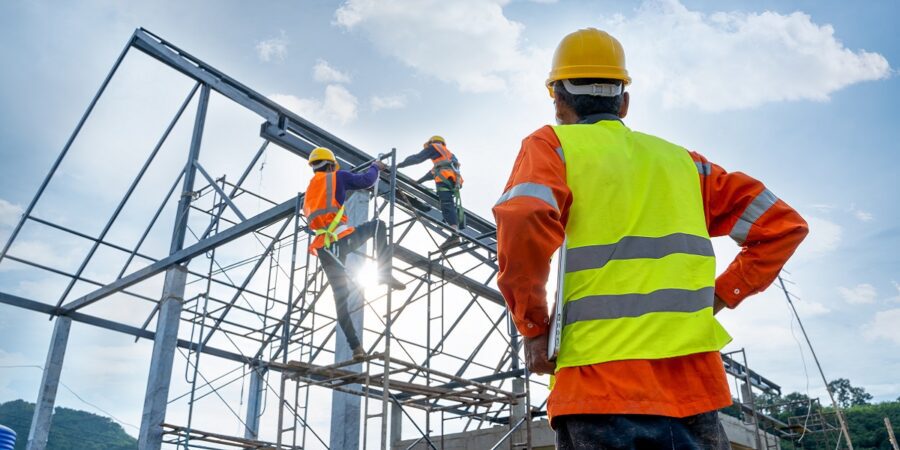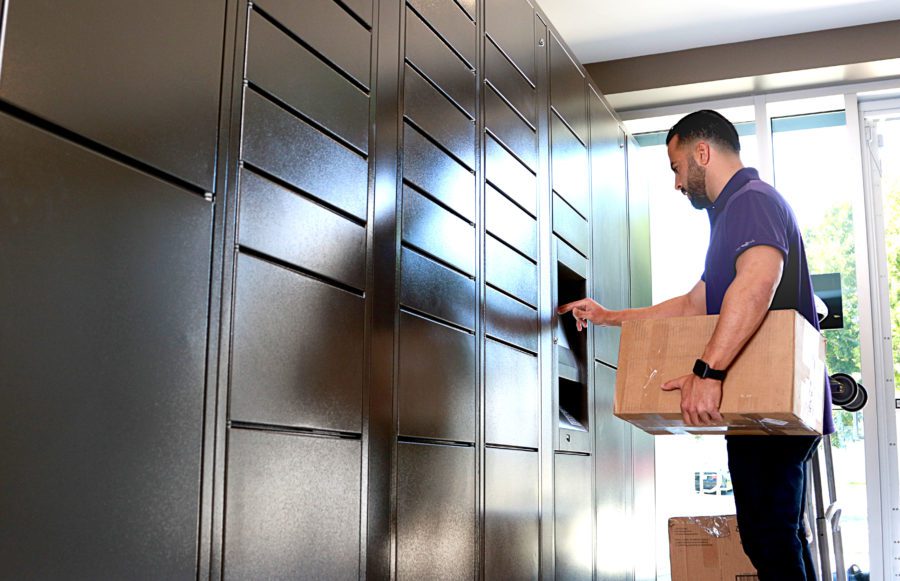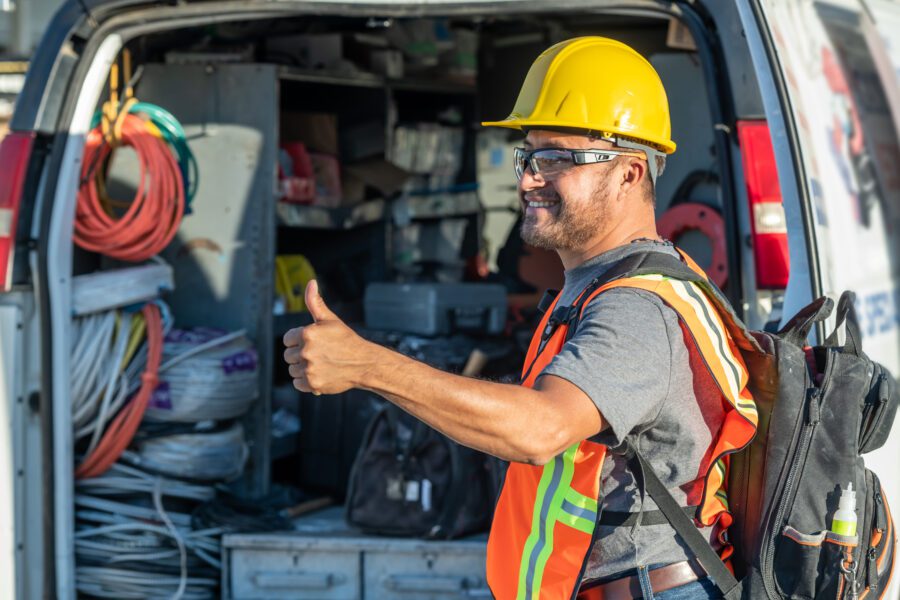
Distributor
The Future of Construction Supply Logistics: Integrating Automated Parcel Solutions
Written by: Parcel Pending
5 Min Read
Published: March 30, 2024
Updated: April 18, 2024
The construction industry is poised for transformation, especially in building material supply logistics. Gordian’s most recent “Quarterly Construction Cost Insights Report for Q4 2023” update reveals a dichotomy of stabilization and persistent challenges that construction professionals must address to ensure timely construction project completion and cost-effective construction supplies delivery.1
Stabilizing Trends and Persistent Hurdles
In late 2023, the market breathed a sigh of relief as the prices of key building materials such as structural steel, framing lumber, and conduit decreased compared to the previous turbulent years.2
As Todd Burns, President, Project and Development Services, Americas, JLL, articulated: “With immense housing needs, return to office strengthening and federally backed infrastructure and manufacturing accelerating, the industry is poised for growth despite challenges.”3
These challenges include:
- Labor Shortages: Despite a stabilized market, the shortage of skilled laborers remains a significant roadblock, causing construction project delays and escalating labor costs.
- Interest Rate Challenges: Fluctuating interest rates add another layer of complexity, influencing the borrowing costs of construction projects.
- Red Sea Turmoil: Geopolitical unrest has disrupted maritime logistics. These events led to tragic losses and skyrocketing building material freight rates as companies rerouted around Africa to avoid conflict zones.
- Raw Material Shortages: The demand for quality materials is currently outpacing supply, creating a bottleneck that reverberates along the supply chain and exacerbates delays.
- Cargo Theft/Fraud – A new threat of cargo theft and fraud has emerged: “double brokering”. The Wall Street Journal reports that fraudsters, masquerading as legitimate carriers, are accepting payments to transport goods but then outsourcing the job and skimming off the top; alternatively, they are absconding with the merchandise to sell on their own accord.4 This fraudulent chain of events creates victims at each link: shippers lose their goods, brokers deal with betrayal, and the actual carriers end up uncompensated. Reports of freight fraud more than quadrupled in 2023 from the year before, according to data from CargoNet.
- Weather Challenges: Unprecedented droughts impeding major river transport corridors have also compounded delayed delivery schedules for construction supplies and already high logistics costs.
How to Improve Construction Supply Logistics Efficiency
Given the challenges the construction supply industry is facing, efficiency in supply logistics and construction materials distribution is paramount. Here are the best practices to implement to help your business tackle inefficiencies and pave the path to progress:
Improve Warehousing Systems
Warehouse automation simplifies processes, saving time and reducing logistics errors. A good Warehouse Management System (WMS) allows for real-time inventory management and tracking, boosting warehouse efficiency, productivity, and accuracy.
Enhance Customer Experience with Omnichannel Solutions
The construction supply industry must create a unified shopping experience to satisfy customer expectations. Omnichannel shopping means integrating online stores with physical retail experiences to ensure consistency across all platforms — from browsing and ordering construction materials to delivery and support. By giving customers an omnichannel experience, construction supply distributors provide convenience, speed, and a personalized touch.
Embrace Digital Transformation
The power of digitization can’t be understated. It allows distributors to stay competitive and amplifies distribution efficiency. McKinsey & Company reports that COVID has accelerated digital transformation and that more than 50% of construction executives surveyed have already boosted their digital investment.5 By leveraging technological advancements, companies can meet the fast-paced demands of contractors and customers who crave real-time interactions and intelligent solutions. 80% of B2B customers expect responses and interactions in real time.6
Leverage Technology for Strategic Advantage
Technological advancements are transforming the distribution industry. The integration of omnichannel strategies is just the start. Construction supply distributors can significantly enhance their operations using analytics, supply planning, and logistical support powered by AI and machine learning. These technologies offer a previously unfathomable level of insight and efficiency to every supply chain step, from inventory management to customer engagement.
Adapt to New Competitors
A competitive shift in the landscape has also occurred. Established B2B distribution companies are diversifying their offerings while major B2C e-commerce giants are entering the B2B space, bringing the customer-centric focus that has dominated the B2C market. This intensifies the need for traditional construction supply distributors to innovate and adapt or risk losing ground.
Offer Value-Added Services as a Differentiator
Distributors are encouraged to enhance their value proposition by offering added services that streamline ordering of quality materials and improve overall customer satisfaction. In a post-pandemic era, these value-added services have become niceties and necessities as consumer expectations carry over into B2B relationship demands.
Revolutionizing Construction Supply Logistics with Parcel Lockers
The addition of parcel smart lockers presents an innovative solution that caters to the specific needs of the construction industry. Here’s how they are changing the game:
Oversized Lockers Work for Distributors
With solutions like oversized lockers from Parcel Pending by Quadient, even large and bulky supplies are easily handled.
For instance, Ferguson, a leading distributor, recently installed Parcel Pending by Quadient smart lockers and oversized lockers to meet customer demand. With over 1,500 locations across the United States, Ferguson wanted to provide contractors with convenient, self-service transactions for large and bulky items at high-volume sites.
Johnstone Supply, too, is incorporating smart lockers as part of their supply logistics strategy. The company has over $4.5 billion in annual sales generated by 465 franchise-operated locations across the US and Canada. Quadient’s indoor and outdoor parcel lockers allow Johnstone Supply’s customers to quickly retrieve products at their convenience, allowing them to spend more time at job sites.
24/7/365 Accessibility
Time is money, and construction professionals can’t afford delays. Standard electronic lockers and oversized lockers ensure that supplies are available anytime, maximizing efficiency and meeting tight project schedules.
Adding parcel lockers creates a meaningful point of difference, adds a value-add component, and streamlines customer order fulfillment. Various indoor/outdoor smart parcel lockers meet fulfillment needs, including one-door and three-door oversized solutions. Parcel Pending by Quadient’s Buy Online, Pick-Up in Locker (BOPIL) technology can help construction supply distributors build a consistently superior omnichannel customer buying experience.
In the face of ongoing uncertainty within the construction sector, a wave of measured optimism is rising. The industry is adopting forward-thinking supply chain strategies, harnessing insights from data analysis, employing data-centric technological solutions, and adding value-added services such as parcel lockers.
Ready to grow your construction supply business? Contact one of our parcel management experts today.
Sources:
- Gordian. Construction Cost Insights Report: Q4 2023. www.gordian.com. n.d. https://www.gordian.com/resources/q4-2023-construction-cost-insights-report/
- Building Design + Construction. Construction material prices continue to normalize despite ongoing challenges. www.bdcnetwork.com. January 22, 2024. https://www.bdcnetwork.com/construction-material-prices-continue-normalize-despite-ongoing-challenges
- Kern, Sarah. JLL’s U.S. and Canada Construction Trends 2024 report details a positive outlook for the construction industry. www.us.jll.com. November 28, 2023. https://www.us.jll.com/en/newsroom/us-and-canada-construction-industry-poised-for-growth
- Pacheco, Inti. A Brazen Yogurt Heist Shows How Cyber Gangs Are Hijacking U.S. Goods. www.wsj.com. March 24, 2024. https://www.wsj.com/business/logistics/a-brazen-yogurt-heist-shows-how-cyber-gangs-are-hijacking-u-s-goods-7a8c1843
- Andersson, T., Biörck, J., Sjödin, E., & Mischke, J. The next normal in construction distribution. www.mckinsey.com. September 30, 2020. https://www.mckinsey.com/capabilities/operations/our-insights/the-next-normal-in-construction-material-distribution
- Bromfield, P., Gujral, A., Korsch, M., & Rogalski, A. Industrial Distribution: Opportunities for Differentiation and Growth. www.lek.com. July 12, 2023. https://www.lek.com/insights/ind/us/ei/industrial-distribution-opportunities-differentiation-and-growth



